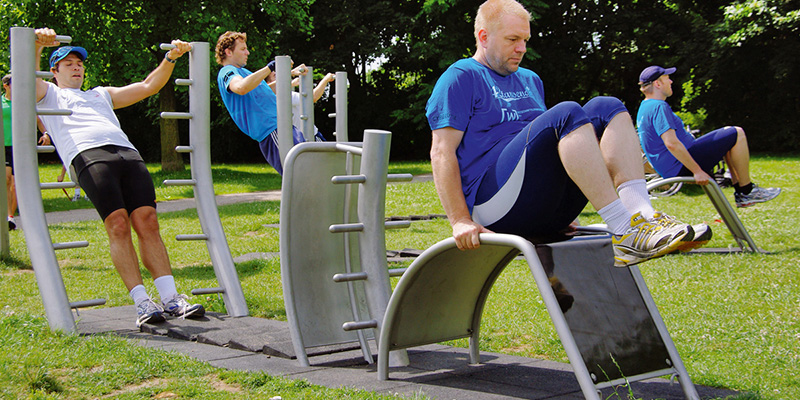Sustainable Fitness: Eco-Friendly Gyms And Green Exercise Practices
Integrating sustainability into our fitness routines has become increasingly vital in an age where environmental concerns dominate conversations. As more people acknowledge the link between personal well-being and the health of our planet, sustainable fitness practices have emerged as a solution that benefits both. This article delves into sustainable fitness, highlighting eco-friendly gyms and green exercise practices that anyone can adopt.

Understanding Sustainable Fitness
Sustainable fitness refers to exercise practices that are mindful of the environment. This includes selecting workouts with minimal ecological impact, opting for facilities that implement green practices, and choosing activities that promote a healthy lifestyle without compromising the planet's resources. The idea is not just about working out; it's about creating a holistic approach to fitness that respects and nurtures the environment. By embracing sustainable fitness, individuals can contribute to a more significant movement towards ecological balance while improving their health.
The Rise Of Eco-Friendly Gyms
Over the past few years, the fitness industry has seen a surge in eco-friendly gyms. These establishments are designed sustainably, focusing on energy efficiency, waste reduction, and sustainable materials. Many of these gyms incorporate renewable energy sources like solar panels, which reduce reliance on fossil fuels. These facilities can significantly reduce their carbon footprint by using solar power while providing a clean energy source for equipment and lighting.
Moreover, eco-friendly gyms often utilize sustainable materials in their construction and equipment. For instance, they might use recycled rubber flooring or environmentally friendly paint. Equipment made from sustainable sources, such as bamboo or recycled metals, further emphasizes a commitment to the planet. Gyms also prioritize water conservation by installing low-flow showers and sinks, which help reduce water waste without sacrificing user experience.
Beyond the physical structure, eco-friendly gyms often promote a culture of sustainability among their members. Many facilities host workshops on sustainable living, encouraging their clients to adopt greener practices outside of the gym. This community focus can help create a supportive environment where sustainability becomes a shared value.
Green Exercise Practices
While eco-friendly gyms set the stage for sustainable fitness, individuals can also adopt green exercise practices regardless of where they work. One of the simplest ways to engage in sustainable fitness is to incorporate outdoor activities into your routine. Exercising outdoors—whether running, biking, or hiking—can significantly reduce the need for energy-consuming facilities and equipment. Nature provides a beautiful backdrop that can enhance your workout experience while reducing your carbon footprint.
Choosing active transportation is another effective green practice. Biking or walking to the gym, work, or other destinations reduces emissions and adds physical activity to your day. This small change can lead to substantial benefits for both your health and the environment. Many cities have tried to create more bike lanes and pedestrian-friendly spaces in urban areas, making it easier for individuals to opt for eco-friendly transportation.

Additionally, community workouts and group classes in parks or community spaces offer a sustainable alternative to traditional gym settings. These gatherings promote social interaction and a sense of community while minimizing the environmental impact of extensive fitness facilities. Group activities, such as yoga in the park or community runs, encourage fitness and foster participant connections, strengthening community ties.
Sustainable Fitness Equipment
When it comes to fitness equipment, sustainability should also be a priority. Many brands now offer eco-friendly workout gear made from organic, recycled, or sustainably sourced materials. Yoga mats, for instance, can be made from natural rubber instead of PVC, which is harmful to the environment. When shopping for fitness gear, individuals can look for certifications that indicate sustainable practices, such as the Global Organic Textile Standard (GOTS) or Fair Trade.
Additionally, purchasing second-hand equipment is another great way to promote sustainability. Individuals can reduce waste and minimize their environmental impact by buying used weights, bikes, or other fitness gear. Thrift stores and online marketplaces often have a wide selection of second-hand fitness equipment at a fraction of the original price.
Creating a sustainable home gym is an excellent option for those who enjoy at-home workouts. This can be achieved using items already available at home for strength training or incorporating bodyweight exercises. Not only does this approach save money, but it also eliminates the need for new equipment, reducing waste. Simple items like resistance bands, a jump rope, or a sturdy chair can be practical workout tools.
The Benefits Of Sustainable Fitness
Adopting sustainable fitness practices offers numerous benefits. Beyond the environmental impact, there are personal advantages as well. Engaging in outdoor activities can improve mental health, reduce stress, and enhance well-being. Nature has a calming effect that can elevate mood and inspire creativity, making outdoor workouts not just a means of physical exercise but also a way to boost mental health.
Furthermore, sustainable fitness fosters a sense of community. As individuals come together to support eco-friendly practices, they connect with others who share similar values. This sense of belonging can motivate individuals to stay committed to their fitness goals while promoting a shared responsibility for the environment.
Future Trends In Sustainable Fitness
As the demand for sustainable practices continues to grow, the fitness industry is evolving to meet these expectations. In 2024, we can anticipate further innovations in eco-friendly gyms and green fitness solutions. For instance, more gyms may implement innovative technology to monitor energy use and optimize resource consumption. This can include innovative lighting systems that adjust based on occupancy or advanced HVAC systems that reduce energy waste.
Additionally, virtual fitness options have gained popularity, particularly after the pandemic. Online workouts can significantly reduce the environmental impact associated with commuting to gyms. These platforms allow individuals to access quality workouts from the comfort of their homes, minimizing energy consumption and emissions.
Conclusion
Sustainable fitness is more than just a trend; it is a necessary shift towards a healthier planet and individuals. By embracing eco-friendly gyms, incorporating green exercise practices, and making mindful choices about fitness equipment, individuals can contribute to a more sustainable future. As we move through 2024 and beyond, the focus on sustainable fitness will likely continue to grow, fostering a culture prioritizing well-being for both people and the planet. Through these efforts, we can create a fitness journey that aligns with our values and respects the environment, ensuring a healthier world for future generations.


















